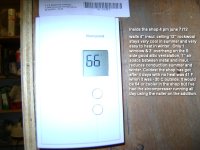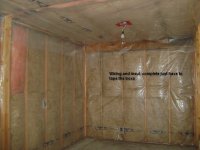check
Elite Member
- Joined
- Sep 26, 2008
- Messages
- 4,012
- Tractor
- 2009 Kubota BX25
Questio: Why use finreglass batts when Roxul is so much better?
Questio: Why use finreglass batts when Roxul is so much better?
Tyvek is an air barrier, not moisture barrier, as above stated. I have seen the cheaper woven products breakdown as well, but not actual tyvek. I hear that tyvek will be going away soon as it is believed to trap moisture in cases. I find this total BS personally. If there is that much moisture in the wall, there are problems elsewhere with construction, flashing, sealing, etc.



